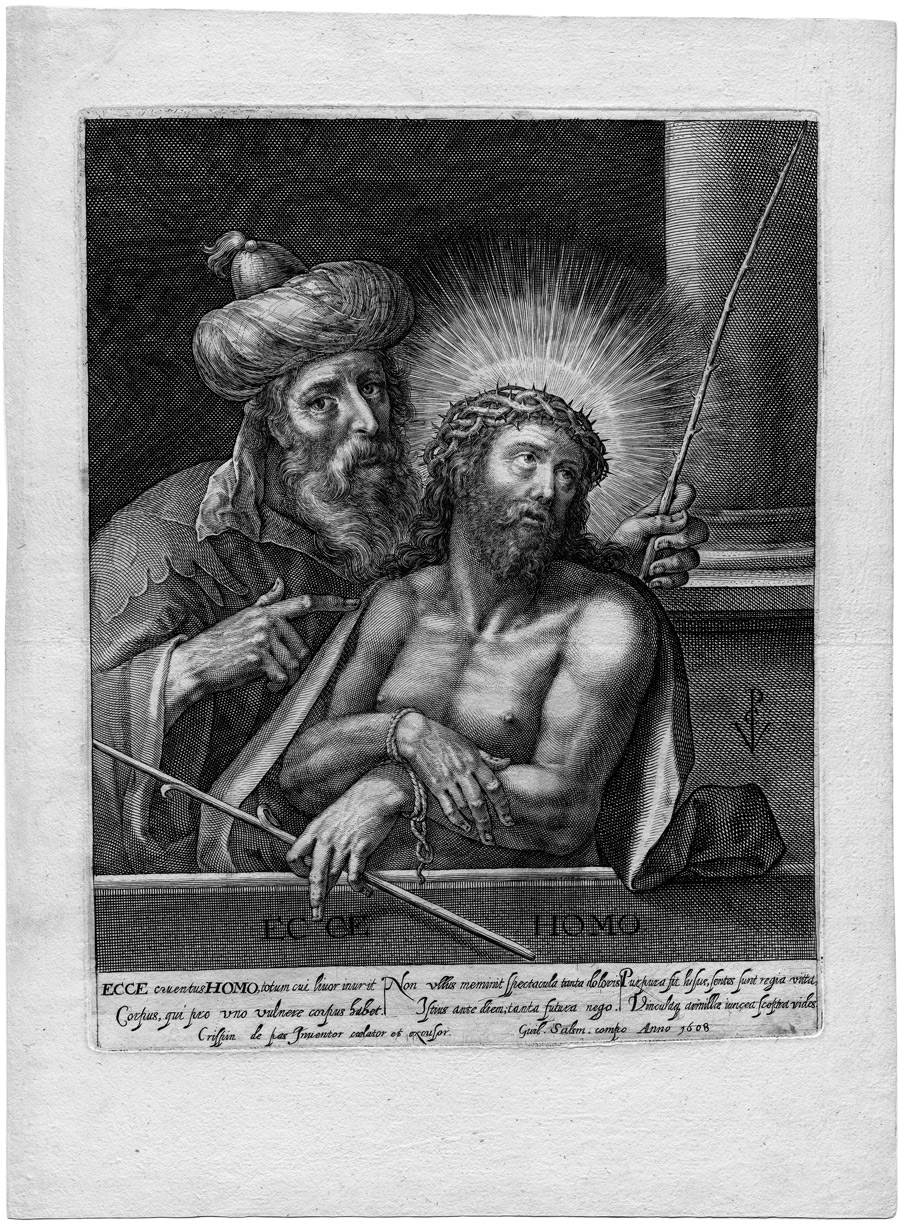Loading the page ...
Crispijn de Passe the Elder
(c. 1565 Arnemuiden – 1637 Utrecht)
Ecce Homo. Engraving. 31.6 x 24.8 cm. 1608. Hollstein 156.
Crispijn de Passe was the progenitor of a widely ramified and productive dynasty of engravers. A native of Arnemuiden in the Dutch province of Zeeland, the artist was probably trained by Dirck Volckertsz. Coornhert, who had also taught Hendrick Goltzius. In 1585 Passe became a member of the Antwerp Guild and shortly afterwards began to work for the famous publishing house of Christoph Plantin. As a result of Spanish religious persecution in Flanders the artist’s family emigrated in the 1590s to Aachen and later to Cologne, where Crispijn was active from around 1594 to 1612. In the latter year de Passe and his family finally moved to the Dutch city of Utrecht, since Crispijn as a Mennonite Baptist was under suspicion of heresy. By 1613 the artist had already been granted citizenship in his new home town. The de Passe family business was remarkably productive, as is documented by an output of over 1,300 individual prints and 49 illustrated works.
This impressive and artistically concentrated portrayal of Ecce Homo was produced towards the end of the artist’s Cologne period. Crispijn and his successors generally preferred small formats, which make this print remarkable for its size alone. It has been executed in a detailed and technically sophisticated engraving technique that is typical of the de Passe workshop. Crispijn’s repertoire of graphic abbreviations is very varied and extremely effective in artistic terms. We see here an engraver at work who in his Cologne refuge has profoundly absorbed the outstanding example of Hendrick Goltzius and the engraving practice of his Haarlem workshop. The body of the dead Christ is given three-dimensionality by means of swelling, concentric cross-hatchings, while stippling in the intermediate areas creates a vibrant light effect. The contrast between the open, more calligraphically treated areas and denser hatching patterns that generate halftones, on the one hand, and the very intricate linework of the background, on the other, produces an overall picture of great tonal refinement.
A brilliant, sharp and contrasting early impression; the guiding lines for the lettering still clearly visible, with a delicate veil of plate tone in the lower margin. Occasional needle scratches along the plate mark, printed on the full sheet. In mint condition.
